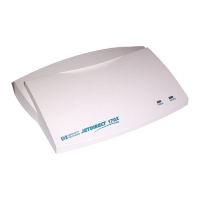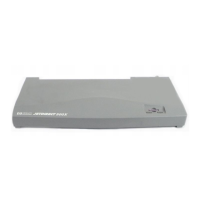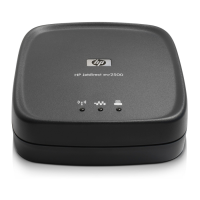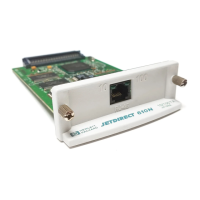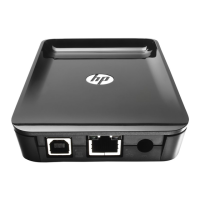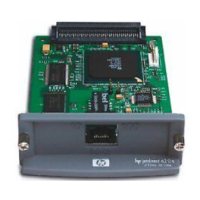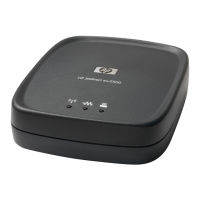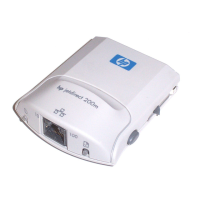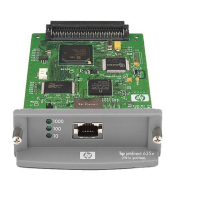ENWW Configuring for LPD Printing 169
Configuring a Network Printer for
Windows NT 4.0 Systems
At the Windows NT 4.0 system, set up the default printer by
performing the following steps.
1. Click Start, select Settings, and click Printers. The Printers
window opens.
2. Double-click Add Printer.
3. Select My Computer, then click Next.
4. Click Add Port.
5. Select LPR Port, and click New Port.
6. In the Name or address of server providing lpd box, type the IP
address or DNS name of the HP Jetdirect print server.
Note NT clients can enter the IP address or name of the
NT server that is configured for LPD printing.
7. In the Name of printer or print queue on that server box, type (in
lowercase) raw, text, binps, auto, or the name of a
user-defined print queue (user-defined print queues can be set
up through the embedded Web server, see Chapter 4
). Then
click OK.
The HP Jetdirect print server treats text files as unformatted
text or ASCII files. Files that are raw are formatted files in PCL,
PostScript, or HP-GL/2 printer languages. If the queue type is
binps, the PostScript interpreter is instructed to interpret the
print job as binary PostScript data.
Note For a three-port HP Jetdirect external print server,
attach a port number to the queue name (for
example, raw1, raw2, or raw3).
8. Ensure that the port is selected in the Add Printer list of the
available ports, then click Next.
9. Follow the remaining instructions on the screen to complete the
configuration.
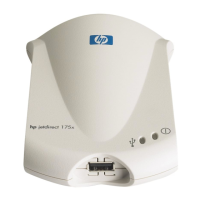
